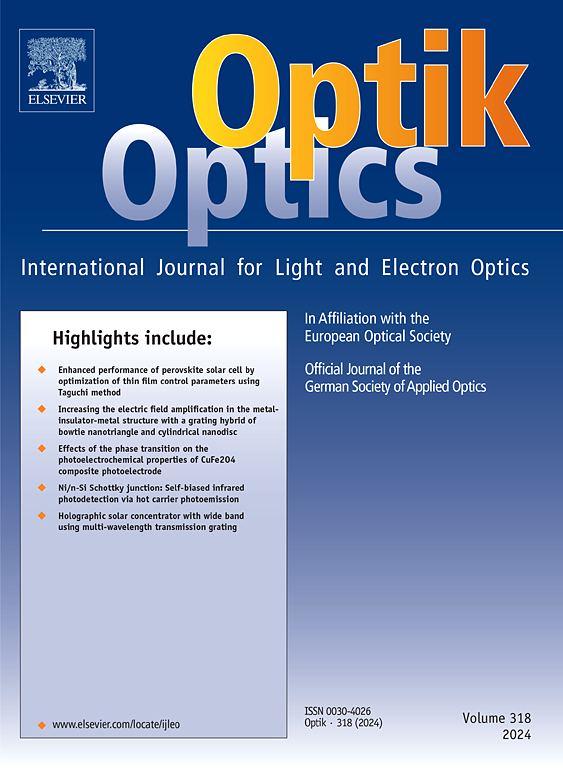Luminescent properties of NaMg6SiO8:Eu3+, Tb3+ phosphor for W-LED applications
IF 3.1
3区 物理与天体物理
Q2 Engineering
引用次数: 0
Abstract
A series of Eu3+ and Tb3+ ions doped (separately) with the NaMg6SiO8 silicate host were prepared by using the approach of solid-state reactions. At 617 nm (red) and 545 nm (green), the luminescent material showed strong brightness because of the electronic shifting of 5D0 → 7F2 (Eu3+) and 5D4 → 7F5 (Tb3+), respectively. Powder X-ray diffraction (PXRD) patterns and scanning electron microscopy (SEM) pictures were used to study the phase formation and morphological analysis of this phosphor. The CIE coordinates were used to determine its color. In order to investigate luminosity spectra, measurements were made of the excitation, PL characteristics, and luminescent decay time of the emission shifts of Eu3+ (5D0 → 7F2) and Tb3+ (5D4 → 7F5).
用于W-LED的NaMg6SiO8:Eu3+, Tb3+荧光粉的发光性能
采用固相反应的方法制备了一系列分别掺杂NaMg6SiO8硅酸盐主体的Eu3+和Tb3+离子。在617 nm(红色)和545 nm(绿色)处,由于5D0→7F2 (Eu3+)和5D4→7F5 (Tb3+)的电子位移,发光材料表现出较强的亮度。采用粉末x射线衍射(PXRD)图和扫描电镜(SEM)图研究了该荧光粉的相形成和形态分析。CIE坐标被用来确定它的颜色。为了研究发光光谱,测量了Eu3+ (5D0→7F2)和Tb3+ (5D4→7F5)发射位移的激发、PL特性和发光衰减时间。
本文章由计算机程序翻译,如有差异,请以英文原文为准。
求助全文
约1分钟内获得全文
求助全文
来源期刊

Optik
物理-光学
CiteScore
6.90
自引率
12.90%
发文量
1471
审稿时长
46 days
期刊介绍:
Optik publishes articles on all subjects related to light and electron optics and offers a survey on the state of research and technical development within the following fields:
Optics:
-Optics design, geometrical and beam optics, wave optics-
Optical and micro-optical components, diffractive optics, devices and systems-
Photoelectric and optoelectronic devices-
Optical properties of materials, nonlinear optics, wave propagation and transmission in homogeneous and inhomogeneous materials-
Information optics, image formation and processing, holographic techniques, microscopes and spectrometer techniques, and image analysis-
Optical testing and measuring techniques-
Optical communication and computing-
Physiological optics-
As well as other related topics.
 求助内容:
求助内容: 应助结果提醒方式:
应助结果提醒方式:


